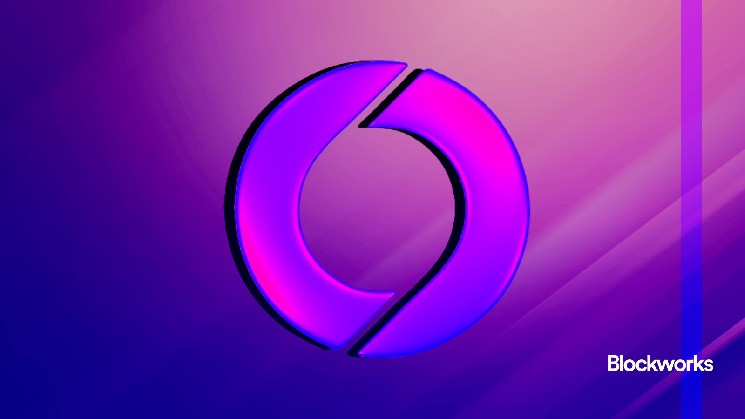Ethereum rollup ‘Soneium’ attempts to redefine ‘GM’

When you get a “GM” from Sota Watanabe, it doesn’t mean “good morning.”
Watanabe, CEO at Startale Labs and founder of Astar Network, instead wants it to mean “go mainstream.”
That’s the slogan — and ambition — of Sony Block Solutions Labs in launching Soneium, a joint venture with Watanabe’s company.
The network’s “Minato” public testnet is set to go live following the WebX 2024 conference on Wednesday in Japan.
In positioning Soneium as a cornerstone in the push for mainstream Web3 adoption, Watanabe repeated the common refrain that this iteration of blockchain technology will onboard the next billion users into crypto.
“What the industry does not have is a distribution channel,” Watanabe told Blockworks. “We would like to develop a blockchain based on real customer feedback, so we are making the chain not only for tech people but also for general people who are going to use blockchain in the coming 10 years.”
Soneium will be Startale’s third blockchain deployment. It follows the original Astar Network layer-1, a Polkadot parachain and the Ethereum layer-2 Astar zkEVM (based on the Polygon CDK).
However, with the launch of Soneium, Astar will “evolve” once again to use the new optimistic rollup based on the OP Stack.
The decision partly reflects the conclusion of Sony’s engineers that the OP Stack is a more “proven” solution, particularly in the wake of blockchain reorganizations — or “reorgs” — encountered by Astar, Watanabe said. Polygon’s own zkEVM has experienced similar problems.
OP Mainnet has had the odd stability issue too. For most of its existence it has conspicuously lacked permissionless fault proofs, recently reverting its latest attempt. The network is expected to re-enable the feature in about two weeks, according to L2Beat.
Until a working fault proof system filters down to other OP Stack chains, claims of inheriting Ethereum’s security are specious at best.
Watanabe is unconcerned, for now.
“The customer does not care which tech stack to use, the customer just wants a stable and robust network,” Watanabe said. “To onboard Sony onchain to a Web3 ecosystem, the tech stack needed to be ready for production.”
Astar zkEVM could only achieve three to four transactions per second (TPS), he said, while the OP Stack version is expected to be higher.
But a source with knowledge of the deal told Blockworks the technical evaluation was a minor factor. “The reality is Astar’s decision was driven entirely by their joint venture with Sony, who is being compensated by Optimism for this deal,” the source said.
Blockworks contacted Optimism representatives for clarification.
Soneium’s backers also plan for the network to join the Superchain — which would put them alongside Base, the OP Stack rollup leading the Ethereum layer-2 space in active users in recent weeks.
Watanabe downplayed the role of competition between rollups.
“A lot of the people asked me about the competition between Soneium and Base because the concept is similar, though not the same,” Watanable said. “But I don’t want to compete with Base — rather, we would like to make the ecosystem bigger together, through the Superchain.”
The testnet launch also kicks off an incubation program called Spark, which aims to create a fertile environment for developers to build and test their applications, alongside mentorship, technical support and funding opportunities — such as investments of up to $100,000 for eligible projects.
Sony is in this for the long haul, Watanabe said, noting that the entertainment and electronics giant has allocated resources from its Web3 team of 30-50 software engineers as well as infrastructure, in addition to its seed funding of the joint venture.
The project follows about a year and a half of discussions, with the talks beginning well before the launch of the Astar zkEVM.
“We would like to show our respect to the open source technology. We have been speaking with Optimism executives and I strongly respect them because they are literally trying to change the existing society — and Sony would like to work with them,” Watanabe said.




 Bitcoin
Bitcoin  Ethereum
Ethereum  Tether
Tether  Dogecoin
Dogecoin  USDC
USDC  Cardano
Cardano  TRON
TRON  Chainlink
Chainlink  Bitcoin Cash
Bitcoin Cash  LEO Token
LEO Token  Litecoin
Litecoin  Stellar
Stellar  Cronos
Cronos  Ethereum Classic
Ethereum Classic  Hedera
Hedera  Dai
Dai  Monero
Monero  Stacks
Stacks  OKB
OKB  Cosmos Hub
Cosmos Hub  Algorand
Algorand  Theta Network
Theta Network  KuCoin
KuCoin  Maker
Maker  Gate
Gate  Polygon
Polygon  NEO
NEO  Tezos
Tezos  Zcash
Zcash  Tether Gold
Tether Gold  Bitcoin Gold
Bitcoin Gold  IOTA
IOTA  Synthetix Network
Synthetix Network  TrueUSD
TrueUSD  Zilliqa
Zilliqa  Holo
Holo  Dash
Dash  0x Protocol
0x Protocol  Qtum
Qtum  Siacoin
Siacoin  Enjin Coin
Enjin Coin  Ravencoin
Ravencoin  Basic Attention
Basic Attention  Decred
Decred  NEM
NEM  Ontology
Ontology  Lisk
Lisk  Waves
Waves  DigiByte
DigiByte  Status
Status  Nano
Nano  Numeraire
Numeraire  Pax Dollar
Pax Dollar  Hive
Hive  Steem
Steem  Huobi
Huobi  BUSD
BUSD  Ren
Ren  OMG Network
OMG Network  Bitcoin Diamond
Bitcoin Diamond  Bytom
Bytom  Kyber Network Crystal Legacy
Kyber Network Crystal Legacy